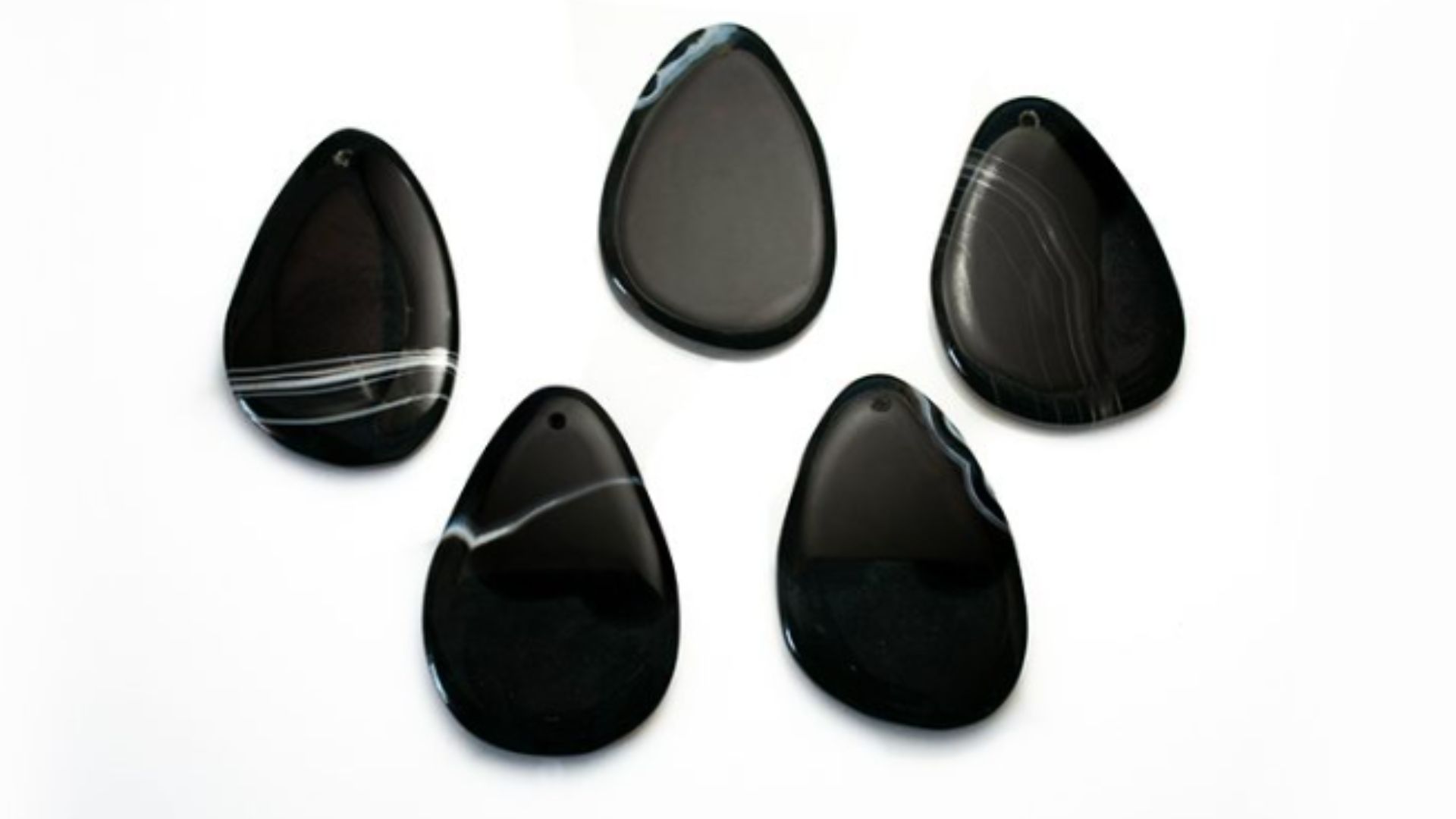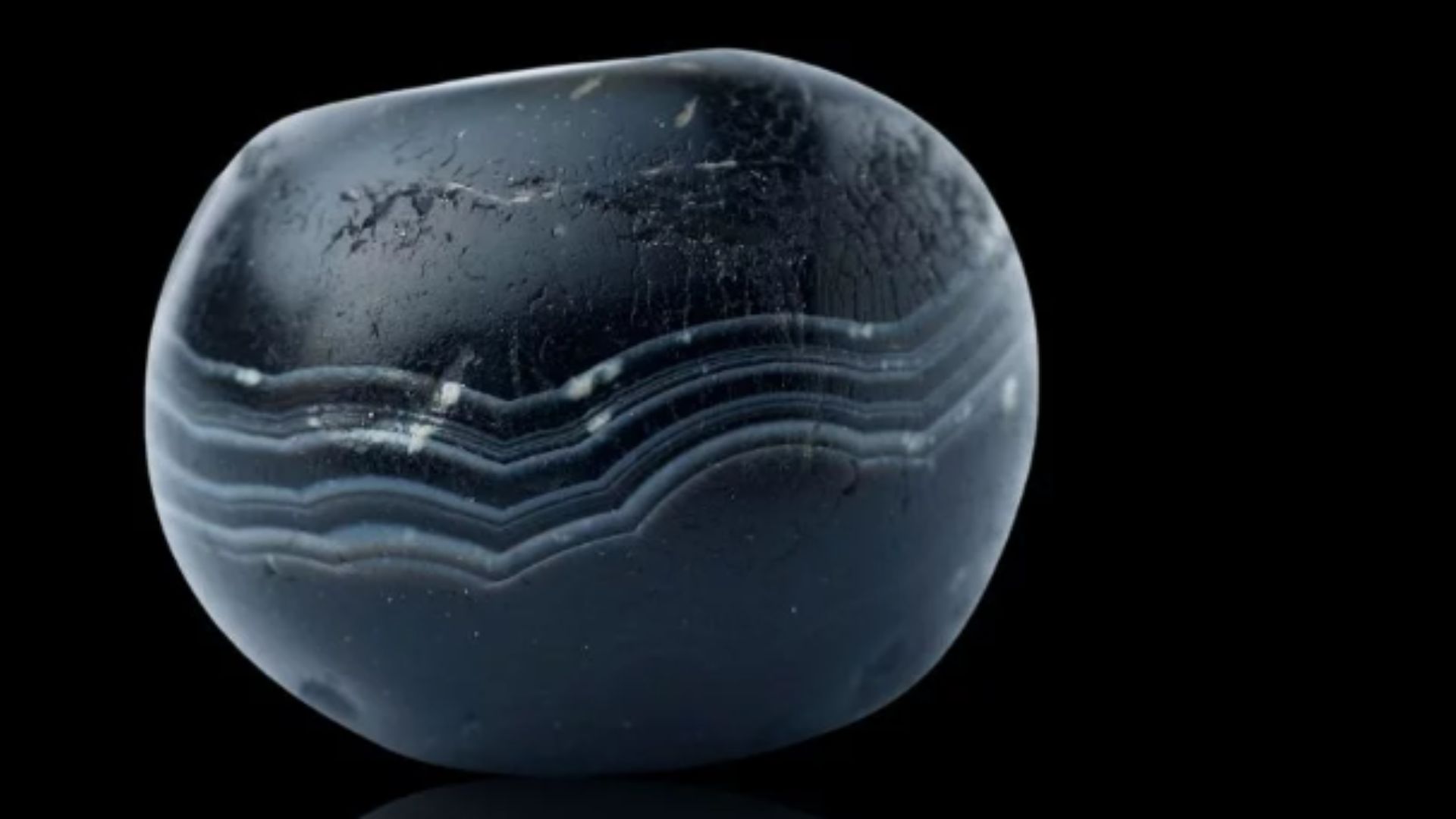Black agate, a stunning volcanic gemstone prized for its deep black color and banded patterns, adorns jewelry and decorates homes worldwide. But behind its captivating beauty lies a dark secret: the potential health risks associated with mining these stones.

A Gemstone Coveted for Centuries
For millennia, black agate has captivated cultures. Ancient Egyptians used it in talismans, Romans believed it brought strength, and today, it remains a popular choice for jewelry and decorative objects. However, the journey from deep within the Earth to your local store can be fraught with danger for the miners who extract it.
Dust Devils and Silent Killers: The Dangers of Silica Exposure
One of the most significant health risks faced by black agate miners is exposure to silica dust. When black agate is extracted and processed, silica-containing rock particles become airborne. Inhaling these tiny particles can lead to a debilitating lung disease called silicosis. Silicosis scars lung tissue, making it increasingly difficult to breathe. This scarring is irreversible, and in severe cases, it can be fatal.
There’s no safe level of exposure to silica dust. Miners working in poorly ventilated conditions are at the highest risk. Sadly, symptoms of silicosis may not appear for years or even decades after initial exposure, making early detection challenging.
Beyond Dust: The Threat of Heavy Metals
Stones mining can also expose workers to heavy metals like lead, arsenic, and mercury. These toxins can accumulate in the body over time, leading to a range of health problems. Lead exposure can damage the nervous system and impair cognitive function, especially in children. Arsenic is a known carcinogen, linked to various cancers. Mercury poisoning can cause neurological damage, tremors, and kidney problems.
The dangers of heavy metal exposure extend beyond the miners themselves. Improper mine waste disposal can contaminate water sources and soil, posing a health risk to surrounding communities.
A Global Issue: Stones Mining and Worker Safety
Black agate is mined in various countries around the world, with varying safety regulations and enforcement practices. In developing countries, miners often lack access to proper protective equipment like respirators, making them even more vulnerable to dust and heavy metal exposure. Explore reelsofjoy.io to learn more about how ethically sourced gemstones can make a difference in workers’ safety.
Let’s not forget the long working hours and physically demanding nature of mining work. This can lead to fatigue, musculoskeletal problems, and increased risk of accidents.
The Ethical Consumer: Making Informed Choices
As consumers, we have the power to make informed choices about the products we purchase. Understanding the potential health risks associated with black agate mining can prompt us to seek out ethically sourced stones. Visit reelsofjoy.org/en for insights on how ethical sourcing practices can positively impact worker safety and environmental sustainability.
Look for reputable jewelers who can demonstrate their commitment to ethical sourcing practices. Certifications like the Fairmined Standard or the Responsible Jewellery Council (RJC) can offer some assurance that the gemstones were mined with worker safety and environmental responsibility in mind.
Beyond Black Agate: A Call for Responsible Mining Practices
The issue of health risks associated with black agate mining is not unique to this particular gemstone. It highlights the broader need for responsible mining practices across the entire gemstone industry.
Technological advancements in dust suppression and ventilation systems can significantly reduce the risk of silica exposure for miners. Additionally, stricter regulations and enforcement mechanisms are crucial to ensure worker safety and environmental protection.
Black agate’s beauty should not come at the cost of human health. By demanding transparency and ethical sourcing practices, consumers can be a powerful force for positive change in the mining industry. Let’s ensure that the sparkle of black agate reflects not just its inherent beauty but also the responsible and sustainable practices that brought it to us.
In Conclusion: Black agate’s allure is undeniable, but the human cost of its extraction cannot be ignored. By educating ourselves about the health risks associated with black agate mining and advocating for responsible practices, we can help create a future where beauty and ethical sourcing go hand-in-hand.

